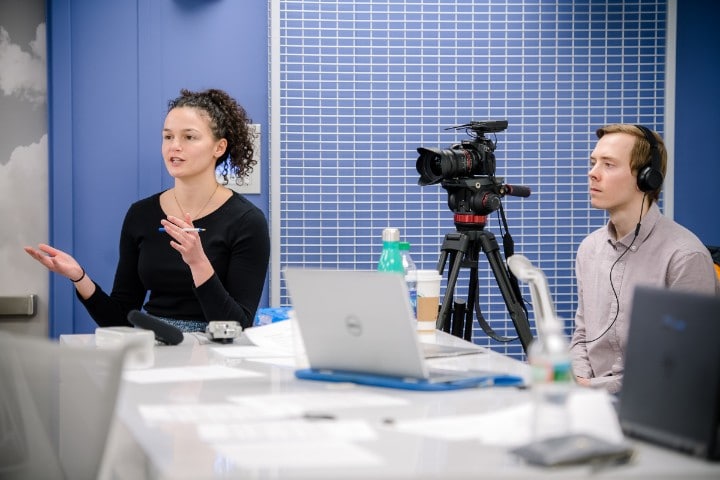How to Get a Story: Two Constants to Uncovering Your Employee’s Best Stories
There’s a lot going on in the mind of a Stories Inc. interviewer when we talk to storytellers (employees our clients have chosen to be culture communicators). Keeping with project goals while creating a comfortable and fun environment are some of our top priorities.
And because our work is highly customized, with different client company cultures and individual personalities every time, a Stories Inc. interview is a unique experience. But, there are two constants for how to get a story for recruitment marketing and employer branding that truly highlights the employee experience and what it’s like to work there.
#1. Always listen like a candidate
Before we sit down with our storytellers, our team has seen the same content candidates have when preparing for their own interviews (think company site, social channels, and LinkedIn profiles of those we will be speaking with). And while we’re on the insider track thanks to a thorough sales and kickoff process, prick our fingers and we still bleed Stories Inc.
We’re looking for the same proof as candidates are of what it’s like to work there. The storyteller may feel all warm and fuzzy describing their colleagues as a family, but I have no idea what that family actually acts like. And nor would a candidate.
For example, during one interview day, a storyteller (who is also a recruiter) and I were discussing work/life balance. He was praising flexible hours and wellness stipends and having the time for passions outside of work. Awesome.
Unfortunately, those words don’t actually show me what work/life balance at this organization looks like. So I jokingly gave him permission to switch out of recruiter mode and asked him what it all means to him, personally.
He laughed and lit up. He has a passion for cycling, and keeps 6am-3pm hours to accommodate that. Finishing early allows him to hop on the bike and spend the final sunlit hours in the mountains near his town, and hit the hay early to do it all again the next day.
A real team member example provides candidates with a realistic insight into the organization and what their life might be like there.
#2. Always be a human
Getting people to talk in stories is hard. Stories are personal, and often require some vulnerability on the part of the storyteller. And who likes being vulnerable, at work, in front of a stranger…and a camera? No one, that’s who.
So don’t be a stranger, be a person. Vent about your bad hair day, tell that story of the time you spent the night on the floor at JFK airport, and laugh if they say something funny. Because that’s what human beings do when they’re having a conversation.
Recently a storyteller mentioned he’s met some of his best friends through his job. That’s great, but I was trying to get story from him that demonstrated this friendship. So I asked,
“What was the moment when you knew this person was becoming your best friend?”
Crickets.
And I get it. Friendships are such a gradual thing, it’s often difficult to nail down a moment when things got “serious.” I decided to share a story of my own, thinking maybe if I told him my “moment when” I realized my colleague had bestie potential, it’d jog his memory. Spoiler alert, it did!
After sharing my story of catching my boss, Lauryn, busting a move on the dance floor, Richard grinned and launched into one of his own:
He and two other teammates were on a project that involved some long hours. One night they finished working around 11:00pm, and realized that the third team member’s birthday, which was the following day, was in fact only 60 minutes away. Instead of heading to bed after a long day they picked up a cheap cake on the way home, counted down until midnight, and had a birthday party in the wee hours of the morning to celebrate their friend. Then woke up the next day to get back to work at 6:00am. For Richard, it was this night that made him realize these were people he truly cared about.
Listening like a candidate helps you ask the right questions to really understand what a culture is like. Treating the interview like a conversation then makes you a person worth opening up to. Then, you’ll have a story of substance to share about your culture.
Like these tips? Bernadette Launi and Lauryn Sargent are presenting a workshop called Humanize Your Employer Branding through Storytelling at EBrandCon. See you there!

